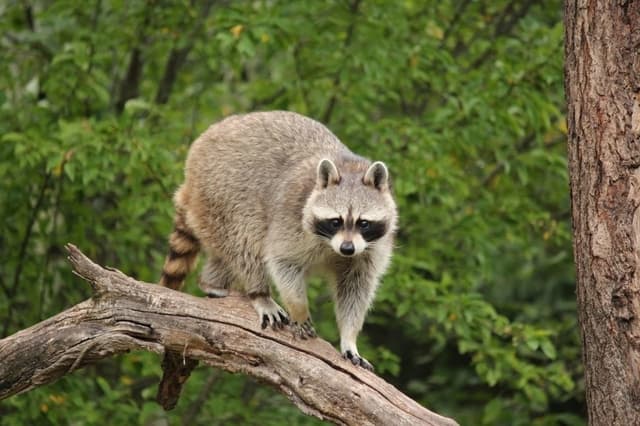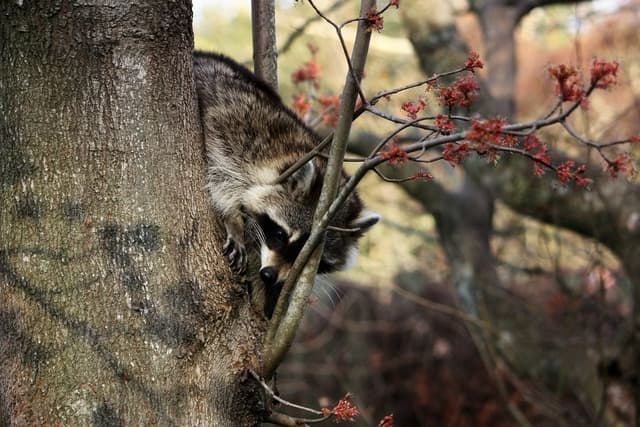Raccoons are some of the most opportunistic feeders. They frequently take up residence in urban areas where they know there is a steady supply of food and water. They have been known to make dens and nests under porches, garages, in attics, sheds, and hollow tree trunks. Hollow tree trunks are particularly useful since they offer a convenient location where they can hang around during the day, bring up their babies and protect themselves during extreme weather.
Do raccoons live or sleep in trees?
Raccoons have been known to create nests anywhere they feel it is comfortable. The female raccoon is also known to share a den with other raccoons. The adult male raccoon, on the other hand, is known to temporarily stay in trees. Raccoons have been spotted living in hollowed trees and even rotted logs, however, they will not build their nests on trees. Raccoons can’t sleep on top of trees; they are only known to live in hollowed trees ideally at the trunk or base.
Where do raccoons prefer to live?
The preferable area where raccoons will build their nests are regions that have abandoned logs or timber trees that are close to crops such as corn and vegetables. Raccoons will eat anything they come across including fish, frogs, snakes, and even dead animals. They often use trees as strategic areas where they can jump on unsuspecting prey. Raccoons in hot areas will also take refuge under trees to cool down their body temperatures after roaming for a long time. Raccoons don’t hibernate, in the wild, they will hide under trees to protect them from the harsh winter season.
How do I get rid of raccoons around trees in my property?
It is important that you tidy up your property and garden area. If possible, trim your trees. Raccoons use trees to move around, hang around while they wait for prey. Trimming trees around your home will also prevent them from gaining access to your structures. Trees close to your structures offer routes raccoons can use to get into your attic. While it is impossible to cut off all tree branches, you could wrap the trunk with two-foot metal sheet two feet above the ground. This measure will prevent them from climbing up your trees.
Closely monitor the area to determine if they have left. Once you are satisfied that they are gone, secure the area tightly to prevent re-entry. In case there are young ones old enough to move, install a one-way exclusion door at the base of the trunk. This will allow them to leave but prevent re-entry. It is not advisable to use bait or try to capture raccoons by hand. Raccoons are wild animals and just like foxes and skunks are exposed to rabies. Cornering a raccoon might force it to react aggressively. Therefore, the best precaution to take when you notice raccoons have built a nest under your trees is to call your local pest control service. A Raccoon Removal Scarborough company is experienced and knowledgeable about raccoon behaviour, they will be in a better position to handle your raccoon problem for you.


